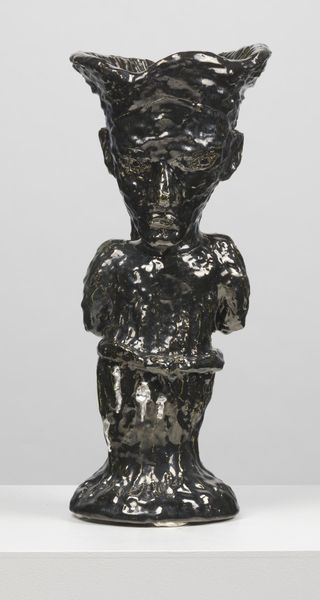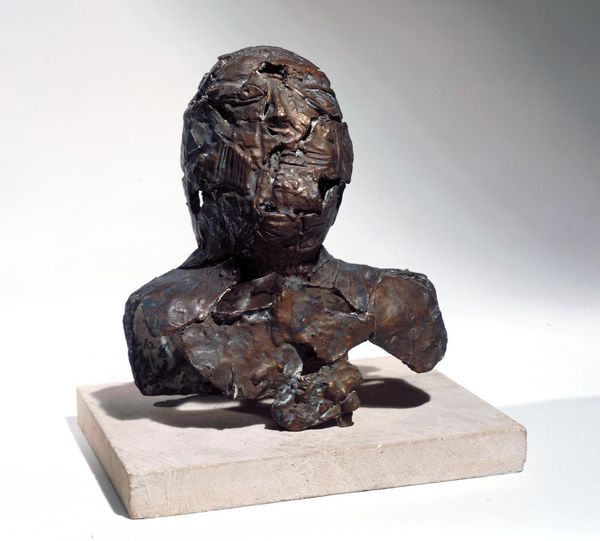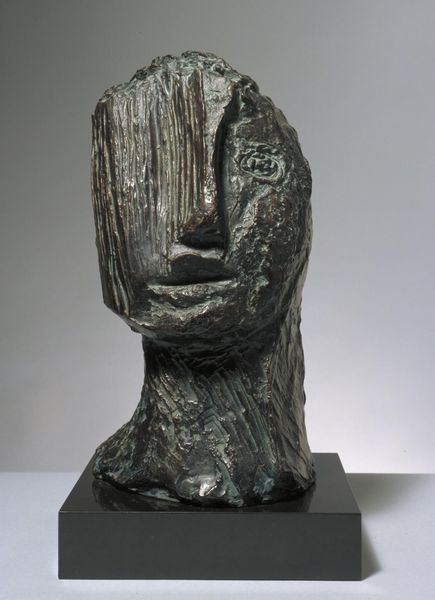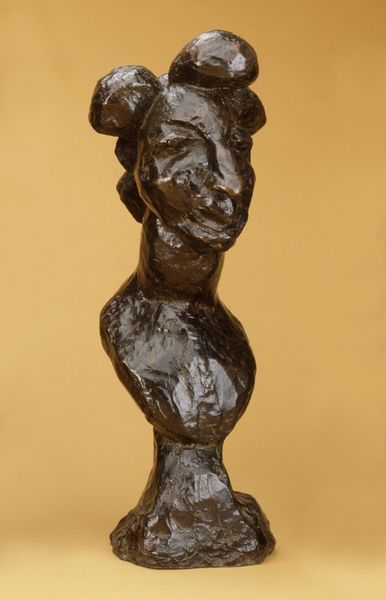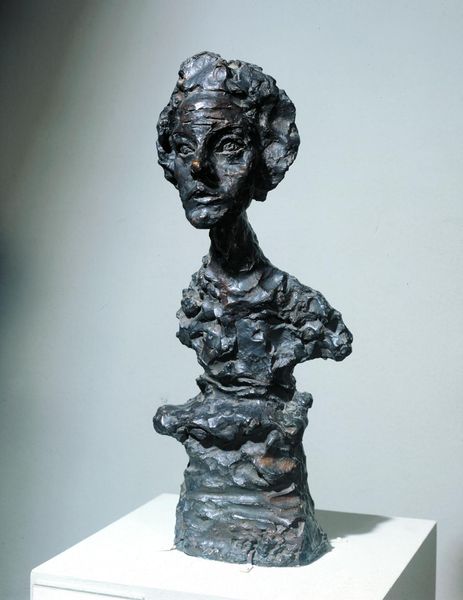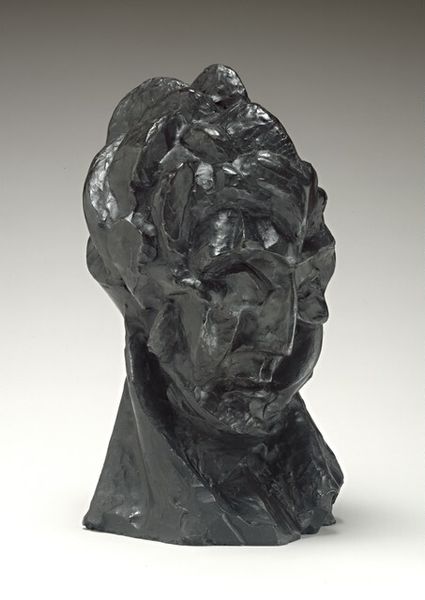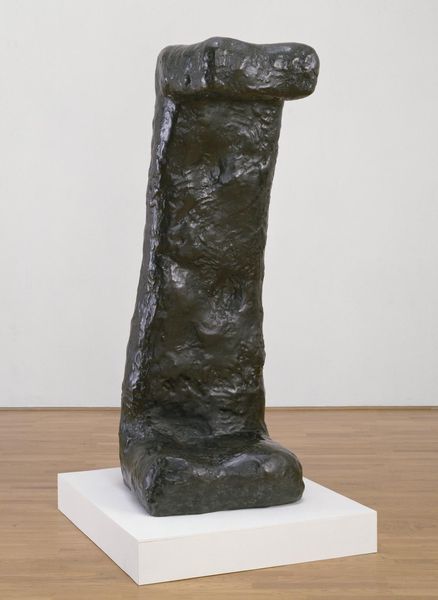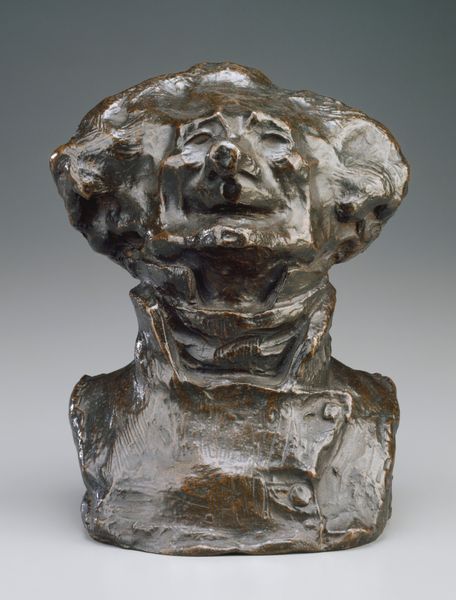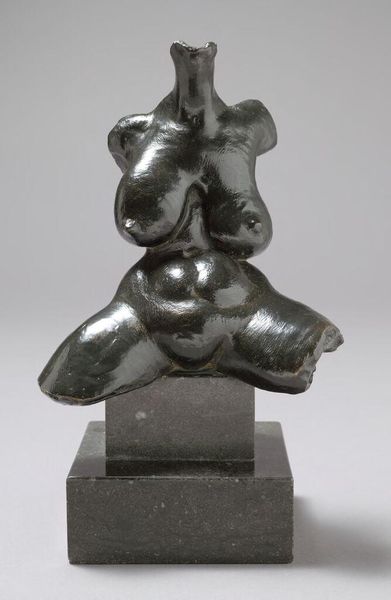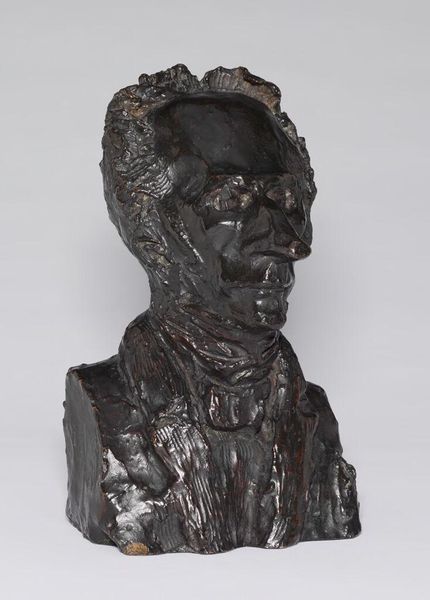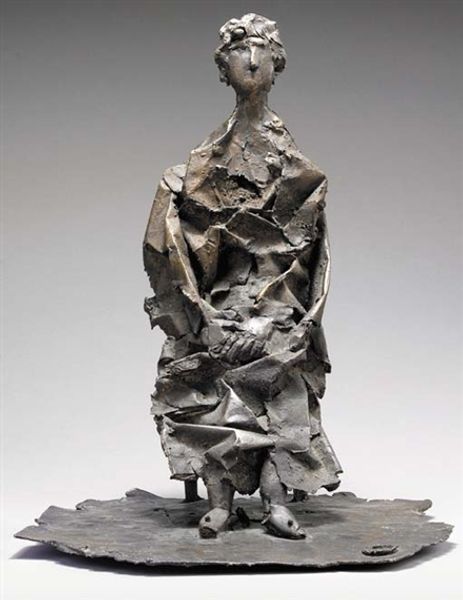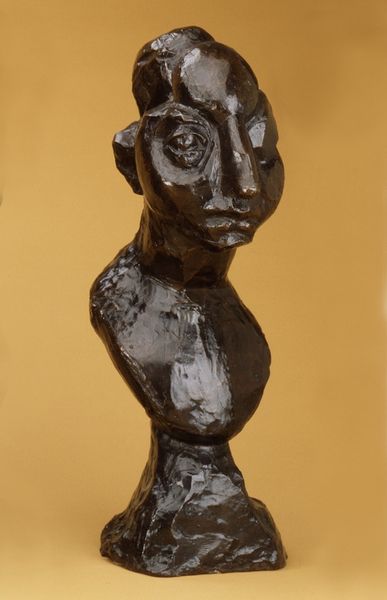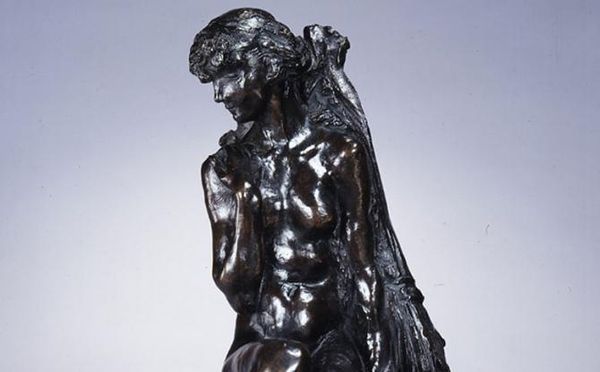
Dimensions: object: 410 x 197 x 152 mm, 5.2 kg
Copyright: © The Estate of Alberto Giacometti (Fondation Giacometti, Paris and ADAGP, Paris), licensed in the UK by ACS and DACS, London 2014 | CC-BY-NC-ND 4.0 DEED, Photo: Tate
Editor: This is Giacometti’s bronze sculpture, Chiavenna Bust I. It has such a rough, almost ravaged surface. What’s the story behind its distinctive appearance? Curator: Think about the post-war context. Giacometti’s figures, so often emaciated and solitary, reflect the anxieties and existential questioning prevalent in Europe after immense social and physical destruction. Doesn't the surface mirror this sense of fragility? Editor: That makes sense. It’s like he's showing the toll of history on the individual. I see it as less about physical accuracy and more about representing a state of being. Curator: Precisely. And consider how the art world, recovering from war, embraced such raw expression as a counterpoint to idealised forms. This piece became a powerful symbol, didn't it? Editor: Definitely. Understanding the history behind it gives it a whole new level of meaning.
Comments
tatemodern 6 months ago
⋮
http://www.tate.org.uk/art/artworks/giacometti-chiavenna-bust-i-t00779
Join the conversation
Join millions of artists and users on Artera today and experience the ultimate creative platform.
tatemodern 6 months ago
⋮
This portrait of Giacometti's brother Diego was made from memory. In his later years, Giacometti was interested in the eyes of his subjects. Many of the portrait busts from this period have a penetrating and intense gaze. 'If I can hold the look in the eyes, everything else follows', Giacometti explained. In the title, Chiavenna refers to the small Italian town where the sculpture was cast, just across the border from Giacometti’s hometown of Borgonovo, Switzerland. Gallery label, March 2025
